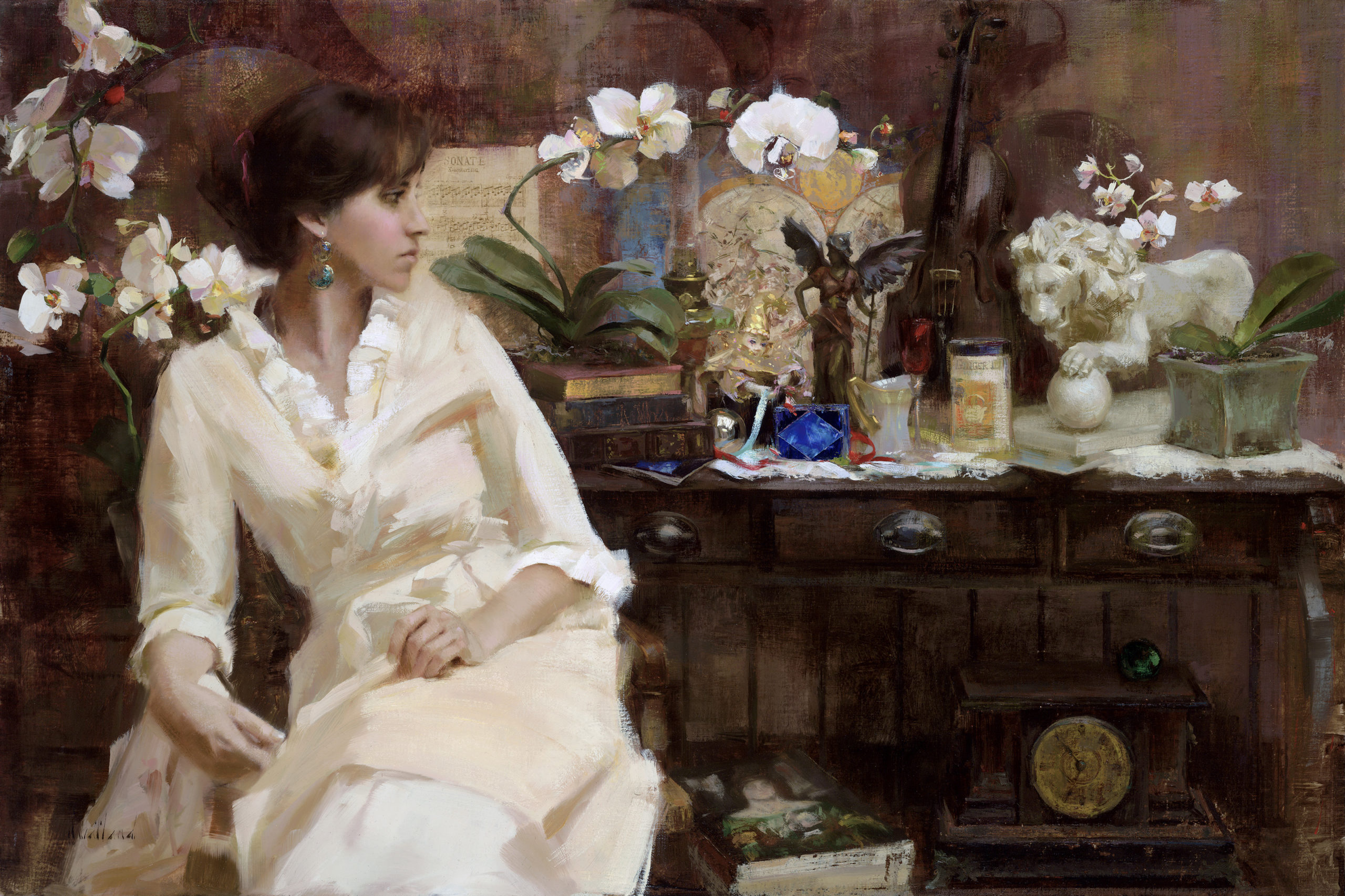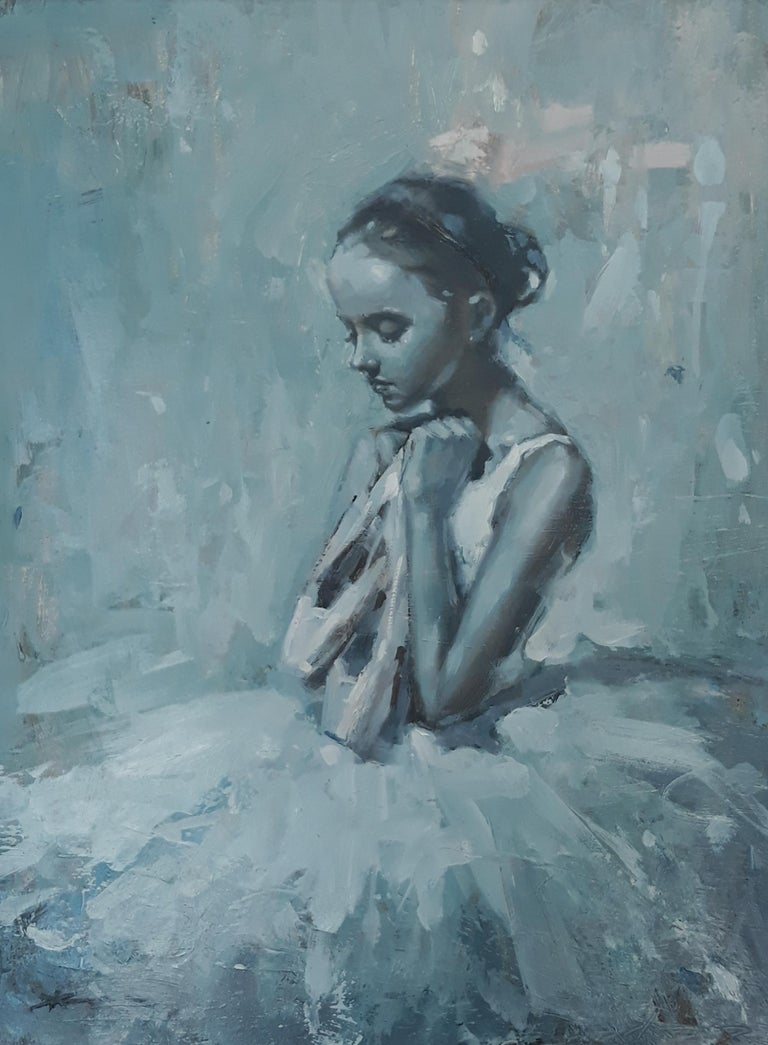How Figurative Oil Painting Transforms Conventional Artistic Expression
How Figurative Oil Painting Transforms Conventional Artistic Expression
Blog Article
Understanding the Art of Metaphorical Oil Paint: Necessary Tips and Techniques for Aspiring Artists
Figurative oil paint represents a complicated intersection of method and interpretation, requiring a complete comprehension of human composition, composition, and shade concept. An expedition of color consistency and texture methods can significantly improve the aesthetic impact of their job.

Comprehending Human Makeup
Understanding human composition is basic for any kind of artist striving to grasp metaphorical oil painting. An extensive grasp of the human type enables artists to create natural depictions that resonate with customers. Expertise of anatomical structures, such as muscles, bones, and joints, gives important understanding into just how the body moves and poses.
Musicians need to acquaint themselves with the percentages of the human number, including the connection between different body components and just how these percentages vary across ages and sexes. This recognition enables precise scaling and point of view in their work. Additionally, understanding the underlying musculature enhances the ability to depict activity and stress in a figure, resulting in an extra compelling and vibrant structure.
Studying makeup additionally helps in identifying refined subtleties in position and expression, which are important for communicating emotion and narrative within a paint. Resources such as anatomical books, life drawing sessions, and online tutorials can be invaluable devices for artists looking for to strengthen their physiological understanding. Ultimately, understanding human composition not only boosts technical ability however also improves an artist's creative vision, allowing them to bring their figurative oil paints to life with authenticity and deepness.
Significance of Composition

Trick principles of structure consist of balance, unity, and centerpieces. Achieving equilibrium guarantees that no single component overwhelms the others, while unity produces a sense of consistency throughout the piece. Prime focus draw focus to substantial elements of the art work, enabling viewers to involve with the narrative or theme extra deeply.
Furthermore, using leading lines and the guideline of thirds can considerably boost composition. Leading lines normally assist the audience's look with the painting, while the rule of thirds offers a framework for putting crucial elements in an aesthetically enticing fashion. By mastering make-up, aiming musicians can elevate their metaphorical oil paints, changing them into engaging aesthetic stories that resonate with their target market.
Learning Color Theory
Shade theory serves as a fundamental aspect of figurative oil painting that matches the principles of composition. Understanding the shade wheel, which includes key, secondary, and tertiary shades, is important for creating harmonious palettes and effective aesthetic narratives.
Secret concepts such as hue, saturation, and value play a vital role in establishing the state of mind and impact of a painting. Musicians should discover warm and amazing colors to stimulate specific emotions; cozy shades frequently communicate power and passion, while cool shades can impart peace and peace.
The relationship in between corresponding shades-- those opposite each various other on the color wheel-- can develop striking contrasts and dynamic structures. When compared, these shades enhance each various other's vibrancy, attracting the visitor's eye and including deepness to the art work.
Furthermore, comprehending analogous shades enables musicians to attain a sense of unity and coherence. By selecting colors that are my latest blog post adjacent on the wheel, one can keep a balanced atmosphere throughout the piece.
Inevitably, understanding shade concept gears up striving musicians with the tools needed to adjust color purposefully, boosting their ability to convey feeling and story with metaphorical oil paint. figurative oil painting.
Methods for Texture
A variety of methods can efficiently create texture in figurative oil painting, including depth and measurement to the artwork. One essential method is using impasto, where thick layers of paint are related to the canvas, permitting a three-dimensional quality. This technique improves light communication, developing dynamic aesthetic interest.
An additional method is scumbling, which entails applying a thin layer of lighter paint over a dried out darker layer. This method allows the underlying shade to show via, causing a soft, distinctive effect that can evoke a sense of atmosphere or age. Dry brushing is also vital; utilizing a dry brush with very little paint, artists can create great lines and delicate appearances, ideal for recording the subtleties of skin or fabric.
Additionally, scheme blades can be used to scrape or use paint, creating one-of-a-kind patterns and structures. Experimenting with different devices and materials, such as sponges Read Full Article or dustcloths, can additionally improve the textural quality of a paint. Eventually, mastering these techniques needs technique and experimentation, enabling artists to discover the diverse tactile top qualities that can elevate their figurative works.
Developing Your One-of-a-kind Style
An artist's distinct style is frequently the culmination of individual experiences, affects, and methods sharpened over time. Establishing this individuality in metaphorical oil paint requires a conscious initiative to explore both your inner self and the wider artistic landscape. Begin by mirroring on the motifs and subjects that reverberate with you psychologically; your passion will infuse credibility into your work.
Study numerous styles and movements, however rather than copying, extract aspects that talk to you - next page figurative oil painting. Try out various strategies, shade palettes, and compositions, enabling yourself the flexibility to play without the stress of excellence. Keep a sketchbook or journal to document your thoughts, ideas, and artistic development; this will certainly function as a beneficial resource for recognizing persisting themes and choices
Look for useful comments from mentors or peers, as they can supply insights that illuminate aspects of your work you may ignore. Be client with on your own; the trip of creating an one-of-a-kind design is ongoing, advancing with every canvas and each brushstroke you run into.

Verdict
Mastering figurative oil painting requires a thorough grasp of human composition, structure, and shade concept. The integration of these elements not just boosts technological abilities yet also boosts the psychological resonance of the art work. Additionally, the expedition of structure methods adds to a richer aesthetic experience. Ultimately, the cultivation of an one-of-a-kind style through continual practice and representation is crucial for artistic development. Welcoming these foundational principles will significantly profit aspiring artists on their innovative trip.
Figurative oil painting stands for an intricate crossway of strategy and interpretation, requiring a complete comprehension of human composition, structure, and shade theory. An expedition of color harmony and texture strategies can considerably improve the aesthetic effect of their work. By grasping composition, aiming artists can raise their figurative oil paints, transforming them into compelling aesthetic tales that resonate with their audience.
Experiment with various techniques, color schemes, and structures, permitting yourself the freedom to play without the stress of perfection.Mastering figurative oil paint demands a comprehensive grasp of human makeup, composition, and color concept.
Report this page